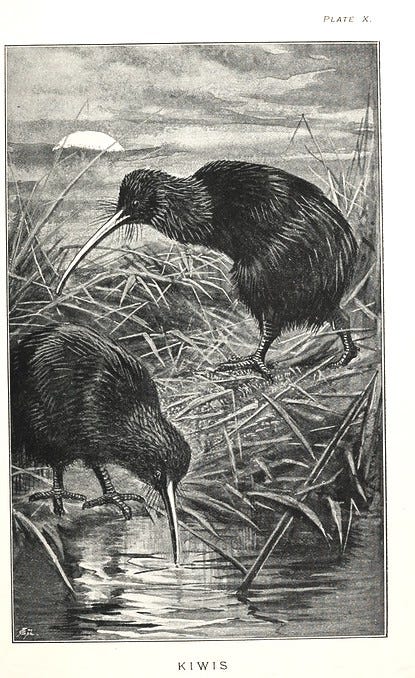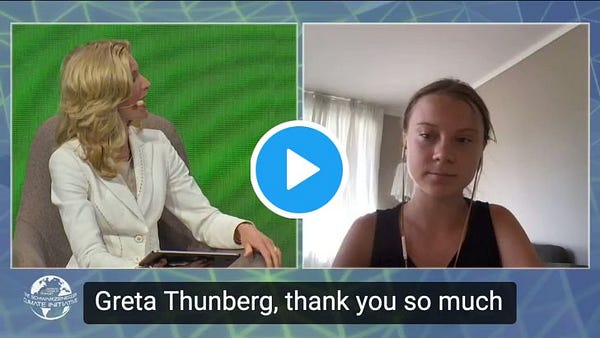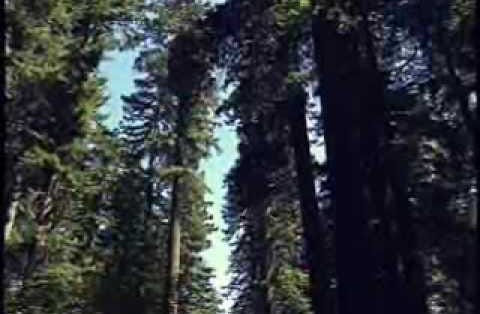🌿Wild Ones #49: Environmental Communication Digest
Environmental keyword: Communicative Power + 'Wild Souls' a new book by Emma Marris + Storytelling and Ecology + More!

Hi everyone, welcome back to Wild Ones, a (usually) weekly digest by me, Gavin Lamb, about news, ideas, research, and tips in environmental communication. You might have noticed my digest went on vacation for a few weeks:) I’ve been taking some personal time over the past month to finish up some writing projects and prepare for a big international move, which I’m really excited to share more about soon! But in the meantime, I just wanted to say thanks so much for following Wild Ones, and looking forward to getting back to the regularly scheduled programming!
Oh, and if you’re new, welcome! You can read more about why I started Wild Ones here. Sign up here to get these digests in your inbox:
🌱Environmental Keyword
“Communicative power”
‘Communicative power’ is a phrase Anders Hansen uses in his 2011 article: “Communication, media and environment: Towards reconnecting research on the production, content and social implications of environmental communication.”
In that article, he writes about the need for environmental communication researchers to connect three areas on the role of mass media in shaping public opinion about environmental issues:
how institutions with competing interests produce media communication about the environment
what content media communications are composed of
and to what degree these media messages have an impact on people’s understandings, attitudes, and actions in regards to environmental issues.
Understanding environmental communication, Hansen says, is about “uncovering how communicative ‘power’ in society is deeply unequally distributed. This means it’s important to understand “how media and ‘mediated’ communication about the environment and environmental controversy are invariably propelled/influenced and manipulated by competing agencies and interests, which in turn have very different degrees of power and very different communicative resources at their disposal.”
For me, ‘communicative power’ is a useful keyword to bring attention to how mass media works more as a ‘guard dog’ of elite interests than a ‘watchdog’ of the public interest. That’s how Julia Corbett, a professor of environmental communication at the University of Utah, phrases it:
“mass media are less a ‘watchdog’ of the public interest than a fairly cautious business that closely watches the existing power structure for clues as to what’s “newsworthy” and important. This makes the media more often agents of social control (“guard-dogs,” if you will, of the existing power structure) than champions of social change.”
Today, Facebook, YouTube, Twitter, and other tech giants increasingly fill the function of traditional mass media. There is a new ‘oil rush’ for our valuable data, and through our engagement with mysterious algorithms, “Our online histories overwhelmingly shape our future options in the brave new world of digital platforms,” says Angèle Christin.
Anyways, I’m not quite sure how to wrap this up. But as I was writing this digest today on ‘communicative power’ and how the mass media actively filters the kinds of environmental messages that actually reach the public(s), I remembered another book I read years ago that talked a lot about mass media ‘news filters’: Manufacturing Consent: The Political Economy of the Mass Media, by Edward S. Herman and Noam Chomsky. So just for fun, I made this little infographic summarizing the 5 ‘news filters’ Herman and Chomsky describe in that book:
👀 What I’m watching
“…the gap between your actions and your words is becoming harder to ignore”
– Greta Thunberg


📚 What I’m reading
Wild Souls: Freedom and Flourishing in the Non-Human World, by Emma Marris.
I really enjoyed Marris’ previous book, Rambunctious Garden: Saving Nature in a Post-wild World. It’s a great overview of the so-called ‘new conservation’ movement. She explores how conservationists are grappling with the impossibility of saving ‘wild’ nature on a planet deeply influenced by humans, and instead focusing more and more on helping flourish ‘novel ecosystems’ in a time of ecological crisis. While her ideas can be controversial in the conservation community, her writing is grounded in brilliant field reporting and research and often forces me to dig deeper into my own positions on environmental ethics.
I just started Wild Souls, but looking to share more of my thoughts about it in the coming weeks. Here’s an excerpt I highlighted from the first chapter:
“The whole Earth is like a larger version of Kaua‘i, with its flora and fauna from all over the planet, legacies of human management going back hundreds of years, and rare animals barely hanging on to existence at the fringes in ecosystems that are warmer and weirder than they once were….In a human-altered world, it seems impossible to just keep saying that our only ethical responsibility to “wild” animals is to “let nature take its course.”
– Emma Marris, in Wild Souls: Freedom and Flourishing in the Non-Human World.


🎧 What I’m listening to
Since tourism is back up and running again in Hawai‘i after over a year of pandemic lockdown, there is a growing number of reports involving tourists harassing wildlife. As conservation officials in Hawai‘i struggle with how to communicate respectful wildlife viewing guidelines to the thousands of tourists arriving in Hawai‘i every day, this music video by ‘Angry Locals’ that came out recently seems like one creative option:)
📰 News & Events
South Korea is bringing back bears in a country of 52 million people – I went to find out how. By Joshua Powell in The Conversation
Top US scientist on melting glaciers: ‘I’ve gone from being an ecologist to a coroner’: Diana Six, an entomologist studying beetles near Glacier national park in Montana, says the crisis has fundamentally changed her profession. By Jyoti Madhusoodanan in The Guardian.
Rivercide, presented by George Monbiot.
Posthumanising Sustainability Our Common Future in a More-than-Human World. Unfortunately, the event has passed already, but it appears you can request to watch recordings of the event if interested!


📚 Research
Storytelling and Ecology: Empathy, Enchantment and Emergence in the Use of Oral Narratives. By Anthony Nanson.
“Linking the ongoing ecological crisis with contemporary conditions of alienation and disenchantment in modern society, this book investigates the capacity of oral storytelling to reconnect people to the natural world and enchant and renew their experience of nature, place and their own existence in the world.”
Indigenous Publicity in American Public Lands Controversies: Environmental Participation in the Fight for Bears Ears National Monument. By Taylor N. Johnson. Part of a special issue on Communication, Race, and Outdoor Spaces in Frontiers in Communication.
Framing Good Food: Communicating Value of Community Food Initiatives in the Midst of a Food Crisis. By Irena Knezevic in Frontiers in Communication

💡 Ideas
This ‘Shazam’ for Birds Could Help Save Them, by Margaret Renkl in NYTimes.
“Last month, the Cornell Lab of Ornithology released an updated version of its Merlin Bird ID app, which allows users to identify birds by song. There are other voice-recognition apps for birds, but they are accurate barely 50 percent of the time. Though Merlin doesn’t claim to be 100 percent accurate, it comes very close.”
Monks Wood Wilderness: 60 years ago, scientists let a farm field rewild – here’s what happened. By Richard K Broughton, in The Conversation.


💬 Quote I’m thinking about
"Hearing can be a source of even more exquisite pleasure but it requires conscious cultivation. I have had people tell me they had never heard the song of a wood thrush, although I knew the bell-like phrases of this bird had been ringing in their back yards every spring. By suggestion and example, I believe children can be helped to hear the many voices about them. Take time to listen and talk about the voices of the earth and what they mean—the majestic voice of thunder, the winds, the sound of surf or flowing streams."
– Rachel Carson, in The Sense of Wonder: A celebration for parents and children
Thanks so much as always for your interest in my work, and if you found this digest useful, please consider sharing with others who might find it interesting too😊 I'd also love to hear from you. Leave a comment to let me know what you think about this digest, what areas of environmental communication you’re involved in/most interest you, or anything you’d like to see more of in Wild Ones:)





